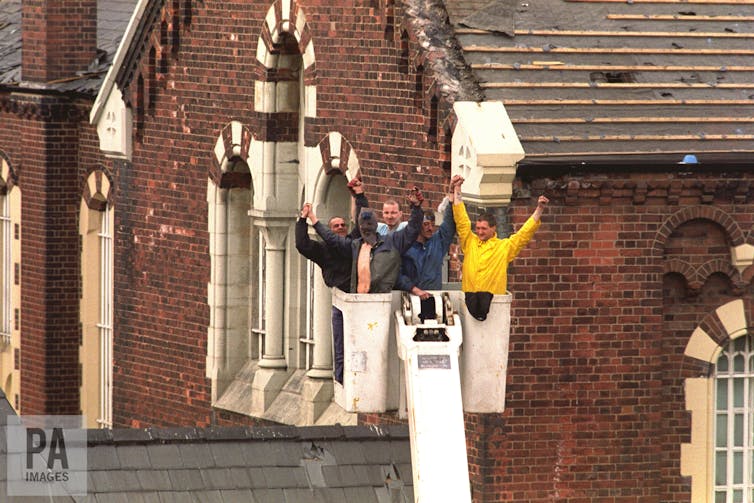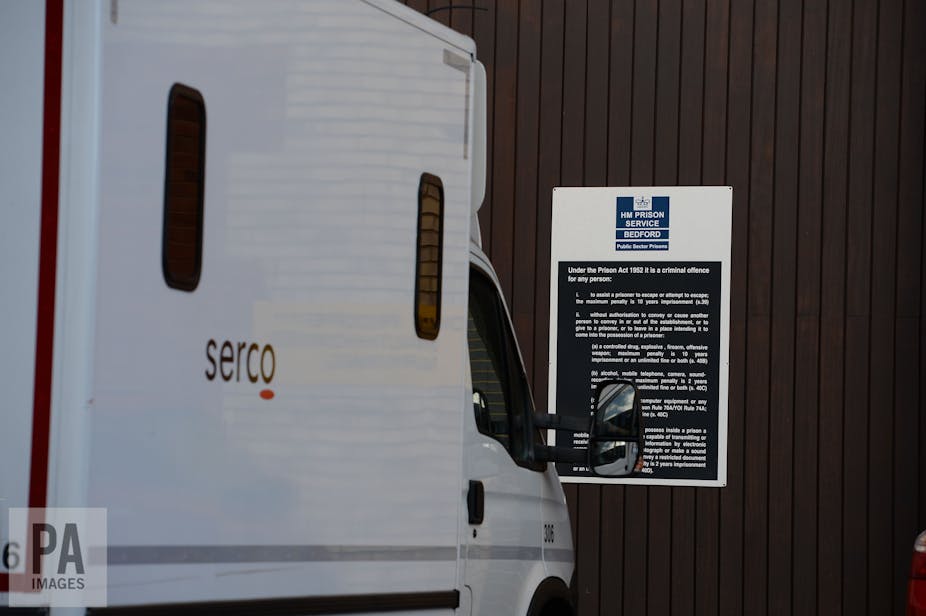In an attempt to force the hand of the government in negotiations regarding the numbers of prison officers employed in public sector prisons, more than 10,000 prison officers have taken part in a 24-hour “protest action”.
It is illegal for prison officers to strike, but officers stopped work at midnight on November 15. Prisons went into “lockdown” – operating on skeleton staffing levels. A number of governor-grade staff (operational managers) undertook prison officer duties and many prisoners were left locked in their cells for much of the day.
The Prison Officers Association (POA) called for the action after losing patience with the justice secretary, Liz Truss, regarding a planned meeting to discuss their concerns regarding prison officer safety. According to the POA press release, the latest offer on prison officer “well-being” was “unacceptable”. The “protest action” was therefore intended to send a message to the government about the importance of engaging immediately in further negotiations so that a “sensible solution” could be reached.
Fractious relations
The relationship between the government and POA has traditionally been one of hostility and mistrust – so much so that in 1992 a previous Conservative administration tried to abolish the POA. There has, however, been a coincidence of interests and a shared understanding of the problems confronting prisons in the past few months. This unlikely alliance appears to have weakened if not broken down completely in the run-up to the industrial action.
The government launched a high court action on the morning of November 15 to stop the “protest action”, with the court ruling the action illegal and that officers should return to work immediately. After some delay, the POA announced the end of the action and that Liz Truss agreed to a meeting. So, the action achieved its goal.
History of violence
The POA has described prisons as “volatile” and “dangerous”. The word “bloodbaths” was also used and this understanding has been influential in shaping political and media debates. Government policies, such as those outlined in the recent white paper Prison Safety and Reform have reproduced its claims connecting prisoner violence, self-inflicted deaths and prison officer assaults with a decline in prison officer numbers since 2010.
But when the prison is explored in the context of historical evidence, the claims of the POA appear much less convincing. Let us first consider claims that prisons are dangerous places for prison officers. Since 1850, only eight members of prison staff have been murdered at work in England and Wales. The last prison officer murdered was Derek Lambert in 1965, some 50 years ago.
Official data indicates that, before 2011, recorded incidents of violence against prison officers was in decline – there were, on average, only 52 incidents requiring hospital treatment each year. In response, on April 17 2012, the POA asked officers to “always report assaults”. The data cited in the media – by politicians and the recent white paper on prison officer assaults – have been only from 2012 onwards.
Further, before the cuts in prison officer numbers in 2010 there were recorded increases in prisoner violence. For example, from 2000-2009, there was a 61% increase in prisoner violence. Prisoner violence cannot be explained by staffing levels alone.

It is significant to note with regards to the recent disturbances at HMP Bedford, that the largest-ever prison disturbances in England and Wales – at Manchester, Bristol and Dartmoor prisons took place in April 1990 – which was when the staff-prisoner ratio was at its lowest-ever: one officer for every 2.3 prisoners. Though this ratio increased to one officer for every 3.6 prisoners in March 2016, this is still much lower than most of the time in the past, where the average for more than a 100 years was one officer for every six prisoners.
Prisoner deaths
Prisoner deaths have also been tied to numbers of prison officers. The POA raised concerns about the recent murder of Jamal Mahmood in HMP Pentonville, linking this and the record rates of self-inflicted deaths of prisoners to staffing levels. Yet there was no such concern raised by the POA in the past about the racist murders of Zahid Mubarek or Shahid Aziz.
Further the rate of recorded “suicides” in prison has been growing since 1986 – a year when there were 21 recorded suicides. According to the latest figures, released on November 11, there have been 99 self-inflicted deaths in prisons in England and Wales in 2016, the highest number ever recorded.
The problems facing UK prisons today cannot be reduced to reductions in the numbers of staff but rather go back decades, if not centuries. Prisons have always been places of violence, suffering and death for prisoners. This will not be changed simply by employing more prison officers.

